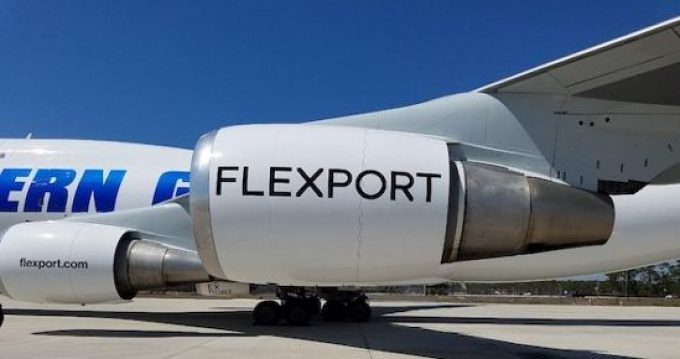DSV chief reticent on Schenker: the focus on growing market share
DSV focused on gains in market share, organic growth and making investors confident in its ...

After two years of soaring yields, air cargo carriers are losing altitude in a bumpy market.
But there remain some opportunities for dedicated freighter operations, despite growing capacity concerns.
Last month, DB Schenker launched a weekly all-cargo connection between Chicago and Sydney: a 777-200F departs Chicago on Monday nights, arriving in Australia on Wednesdays.
According to the logistics firm, this is the fastest connection to Australia for shippers in the US Midwest, and thanks to Schenker’s electronic link to Australian Customs, the loads are cleared prior to arrival in Sydney.
For the most part, traffic consists of shipments for the automotive industry, industrial manufacturing and pharmaceuticals. Schenker emphasises that temperature-controlled storage capabilities are in place at both ends.
Flexport is another forwarder that has ramped up its dedicated freighter activities. In February, it added Chicago to its network of stations served with a freighter wet-leased from Western Global Airlines, this one a weekly connection between Hong Kong and the windy city.
Neel Jones Shah, executive vice-president airfreight of Flexport, acknowledged that the going had been challenging. Overall volumes declined in double-digit figures in the market in the first two months of the year, and yields fell even faster, he said.
Still, Flexports’s planes have been for the most part full, he added.
The impact of the downturn was softened by a slow resumption of all-cargo services out of Asia after the lunar new year break. Flexport itself cancelled freighter flights for close to two weeks.
According to IATA, Asia has been hit the hardest by the slowdown in global demand for air cargo lift. Asian carriers registered a 3.6% decline in demand in February, and intra-regional traffic fell 5%, which the airline interest group attributed to a reduction of components being shipped within the region to assembly lines feeding intercontinental exports.
The Association of Asia Pacific Airlines (AAPA) saw its members’ freight tonne-kilometre tally plummet 11.9% in February, while capacity shrank 1.2%. As a result, load factors dropped 6.5% to 53.3%. January and February combined produced a decline of 8.3% in FTKs for AAPA member airlines.
At the World Cargo Symposium (WCS) last month, IATA chief economist Brian Pearce warned that the situation would get worse before it turned around.
Still, IATA expects the region to recover, based on the assumption that China and the US will resolve their trade conflict.
If this scenario were to prove elusive, the consequences could be dire. Seabury recently pointed out that currently 50% of the airfreight traffic between the two economies is subject to tariffs. If the two sides fail to come to an agreement, this would rise to 100%, it warned.
The decline in traffic has revived concerns about the need for freighter aircraft. Before the market revival in 2017, many had regarded all-cargo planes as a source of red ink on airline balance sheets.
Faced with the prospect of capacity outstripping demand, forwarders have shown little appetite to secure main-deck lift in recent weeks. Nevertheless, Boeing has not changed its demand projections for freighters.
Tom Crabtree, regional director, Boeing Commercial Airplanes market analysis – air cargo, reiterated at the WCS that freighters remained poised to maintain their 50% share of global air cargo traffic. While passenger traffic may be growing faster and new passenger widebodies offered considerable belly lift, their deployment does not match demand, which is driven by industrial flows, Mr Crabtree noted.
There is insufficient airfreight capacity at major gateways, including Hong Kong, Shanghai, Singapore, Seoul, Tokyo Narita and Bangkok, he added.
Vietnam is also short of freighter lift, particularly as its growth has been accelerated by the shift of production from China in response to rising costs and – to a lesser extent – out of concerns over the US-China tariff issue. AirBridgeCargo recently announced a second weekly freighter service to Ho Chi Minh City.
Mr Shah would like to have a freighter serve Vietnam for Flexport, but making the operation viable would be challenging, given the extra block hours compared with serving Hong Kong or Shanghai, he said.
Meanwhile, Schenker has room to spare on its Australia freighter. It has signalled that companies could sign up for block space arrangements on the flight.
Comment on this article